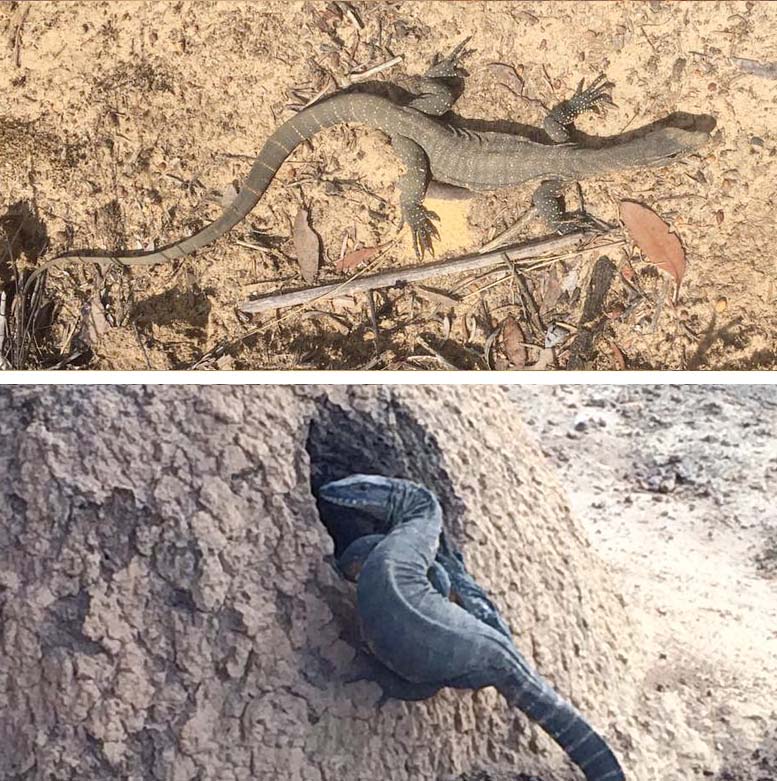This is a continuation of a previous article (here)
I was working down the west end of Kangaroo Island doing some habitat restoration work with some volunteers, when one morning we encountered a sight only very few people had ever seen. We came across a Rosenberg’s goanna that had extracted a puggle from its nursery burrow and was in the process of tearing into its skin with its razor-sharp claws. The puggle’s spines were like a ‘five o’clock shadow’ and it couldn’t defend itself against the relentless and repeated slashes by the goanna. Even though there were five of us watching from less than a metre away, the goanna was committed and focussed. The goanna’s efforts continued into the night and the following morning. Despite successfully locking itself into the ground for over 24 hours, the puggle eventually showed signs of weakness at around midday the following day. The goanna was still hanging around but was very skittish and bolted into the mallee every time we went to have a look. Later on that day, the goanna took off. We wondered whether we had interfered too much and if the goanna was too scared to return. But where did the goanna go? It was nowhere to be seen. Why would it spend all of this energy and then just vanish?
Because I had a lot of work to do with my volunteers and I still wanted to know how the story unfolded, I set up my camera trap. When I returned later in the evening to collect my SD card, the puggle had disappeared. Now I was more eager than ever to check the footage and to see how this all ended. The photos recorded were pretty poor but revealed that the goanna had returned and removed the puggle body and that an adult echidna (that may have been the mother returning to feed the puggle) was also present at the scene.
When I recalled the events to a number of animal carers, I was criticised for not separating the goanna and ‘rescuing’ the puggle. However, the damage had been done and there was no ‘saving’ the puggle. The behaviour of our most southern varanid lizard, the Rosenberg’s goanna was very similar in strategy to its much larger counterpart – the Komodo dragon (Varanus komodoensis) from Indonesia. Komodo dragons are well known for biting, gashing and scratching prey such as pigs, deer and buffalo. Because Komodo dragons feed on carrion and possess large, powerful claws that house large numbers of pathogens, one swipe or bite from the Komodo dragon invariably leads to death from tropical infections and septicaemia. The Komodo dragon then only needs to track the wounded animal as it perishes knowing that the job has been done. The Rosenberg goanna got the job done by giving the puggle so many deep scratches across its back that it would eventually lead to its death. By the time I arrived with the volunteers, there were so many scratches that the only conclusion was the eventual death of the puggle.
We were very privileged to witness such dramatic scenes and to gain an insight into the strategies of the Rosenberg goanna. Both species are listed as threatened and we didn’t want to interfere with taking away a hard-earned meal from the goanna. We decided to let nature take its course. Everyone can help conserve vulnerable Rosenberg’s goannas by restoring vegetation, controlling feral animals and driving carefully.
While secure on the mainland, the Kangaroo Island echidna subspecies is now listed as Endangered under the Environment Protection and Biodiversity Conservation Act 1999. Mortalities from increased tourism, increased numbers of vehicles and feral cats are the most serious threats to the subspecies. Continuation of the feral cat eradication program and increased education for tourists driving vehicles on Kangaroo Island are critical to the long-term survival of this subspecies.
For more information please contact Dr David Ellis, Ecologist, at dellis@ecosure.com.au


